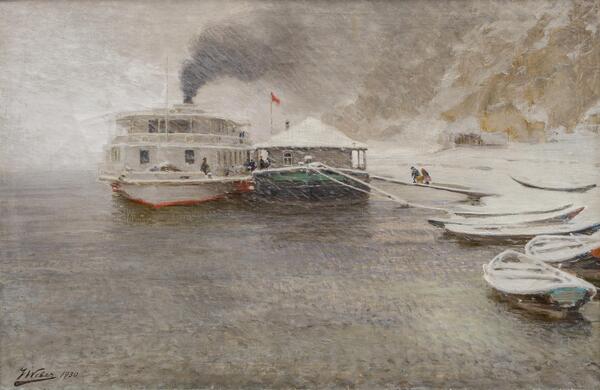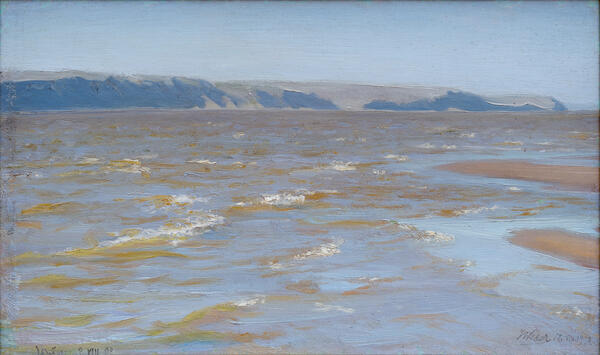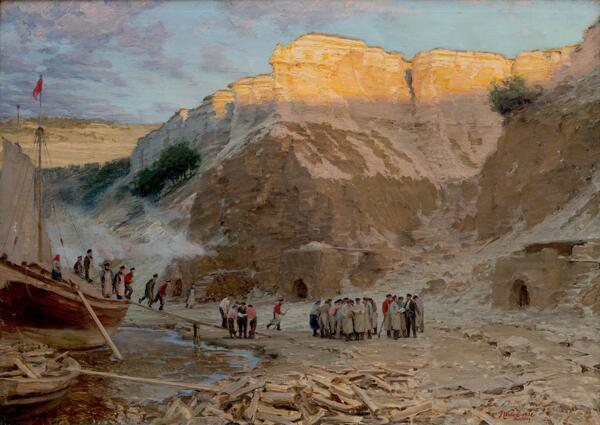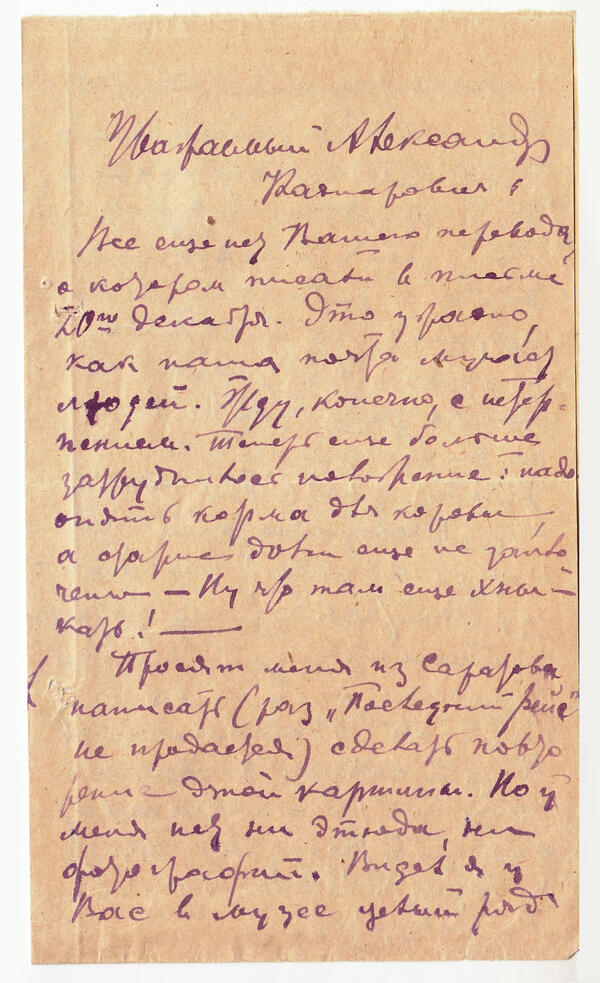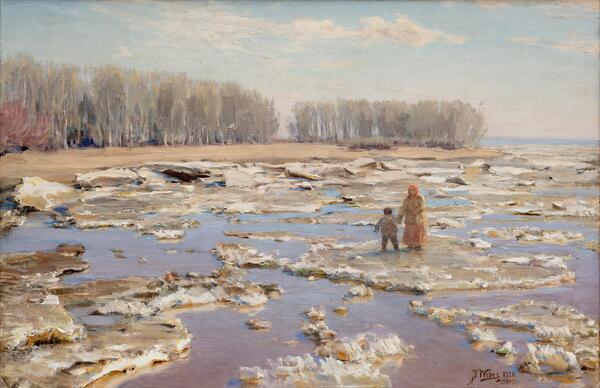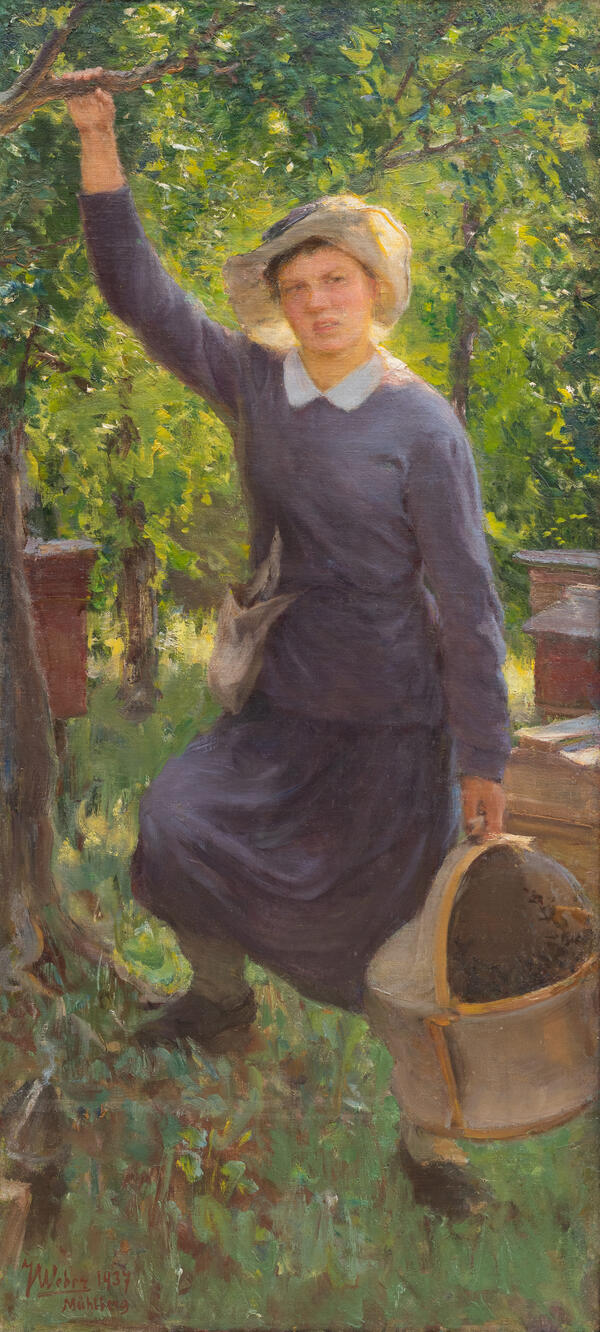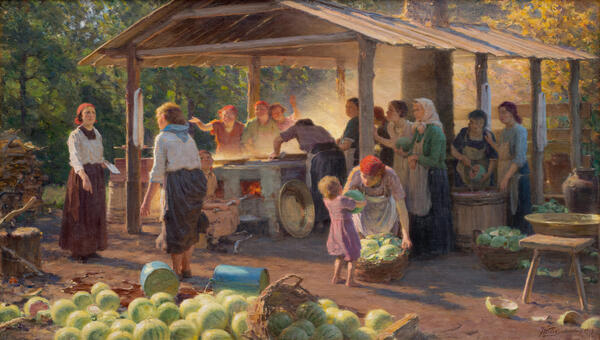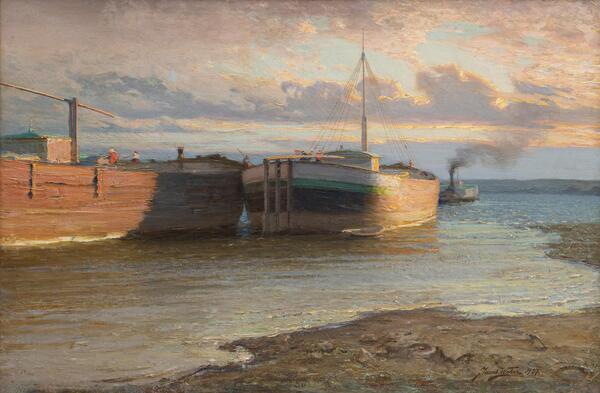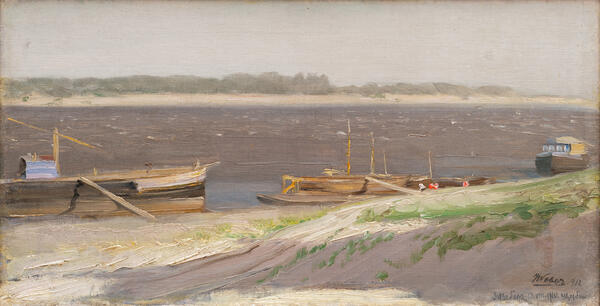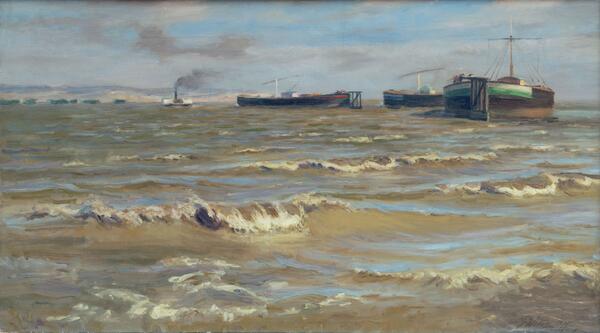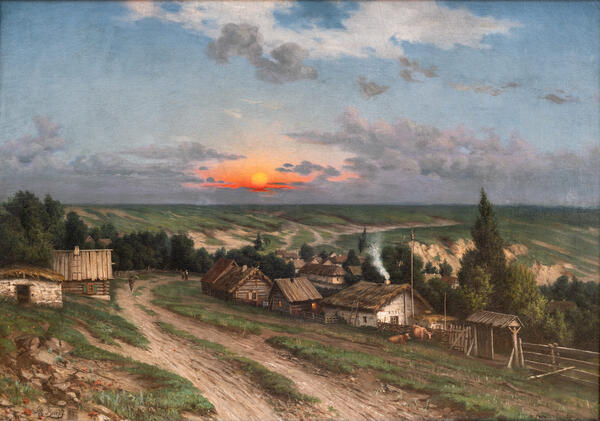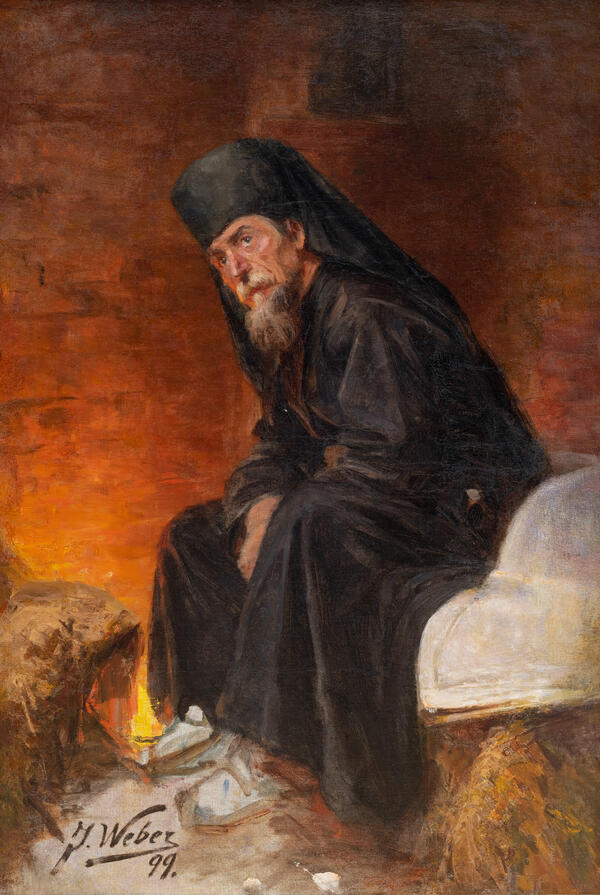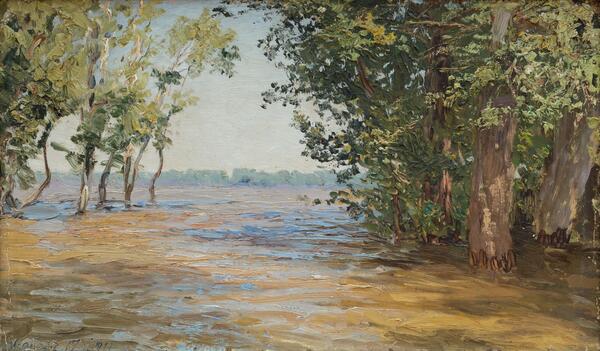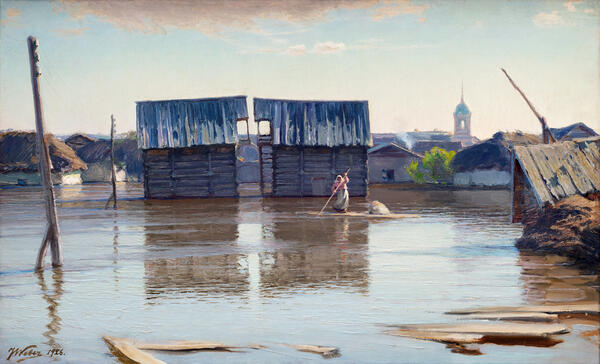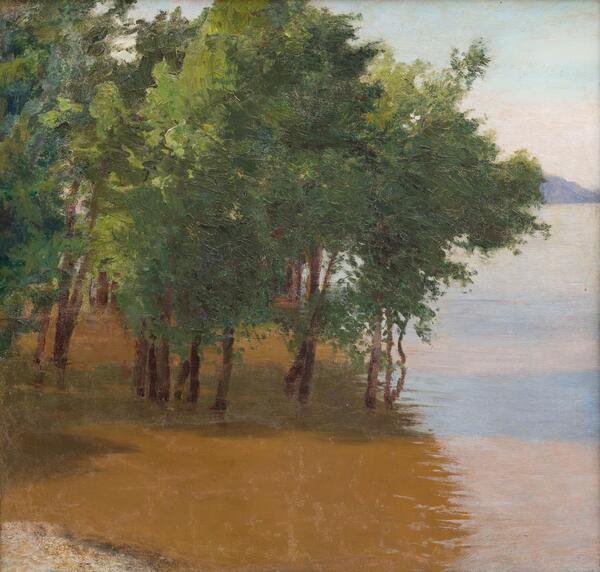The exhibition of the Engels Museum of Local Lore includes the painting “Moonrise” by Yakov Yakovlevich Weber.
To a certain extent, Weber’s artistic predilections sound in unison with the work of the Russian painters Ivan Shishkin and Isaac Levitan. Like his famous colleagues, Weber was very cautious and rarely depicted human or animal images in his landscapes, considering them a “sensitive” genre. However, Weber painted Russian nature without imitating anyone. The artist was able to create his own pictorial language, celebrating the beauty of life, the poetry of nature and its creative forces.
The painting “Moonrise” was created in Shcherbakovka, where Yakov Weber lived for twenty years, periodically visiting Pokrovsk-Engels to teach painting in the art studio. In the German Republic on the Volga, Weber was the only local German artist with a higher education. In summer, many Saratov realist painters, such as Valentin Yustitsky, Ivan Shcheglov, Boris Milovidov and others, came to the picturesque places of Shcherbakovka, located on the high right bank of the Volga.
Weber wrote about Shcherbakovka, “The area where I settled down was hilly, as generally happens on the mountainous side. In the ravines between the mountains there is not a single flat yard to be found. Even the hills have their hillocks. The sun which has just risen casts light long shadows from every hillock and hurst.” Yakov Weber recalled that he worked “with great passion on the boat, then on land, trying to capture the lighting, color, the spirit and mood as accurately as possible, not copying exactly what he saw, but discarding what was in the way and emphasizing the important things so that the view turned out to be, albeit imbued with the artist’s feeling, still true.“
The most fruitful period in Yakov Weber’s creative
and pedagogical work was the 1920s–1930s, when he lived and worked in his
native land. The artist admitted, “I do not have one sky similar to another,
nor do I have a Volga similar to the Volga in another sketch, but nevertheless
both are always characteristic and they cannot be confused with the sky and
water of another area of our vast Russia.“




